"The more personally you write, the more universal it will be." I think this bit of editor wisdom explains the popularity of memoirs and journals as literature. When we read someone else's story we often see ourselves there and that gives us hope!
In this issue we explore the use of journals and memoirs in the classroom. We'll give away books on the topic, hear from an expert on helping students use daybooks to grow their love of writing, and get A Teen's Take on books in this genre.
Please join us as Talking Story gets personal. |
|
Day Book: A New Kind of Journal |
by Karen Haag
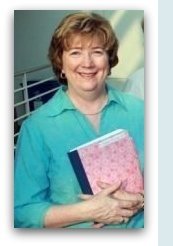 A daybook can be a diary, personal writing journal, research binder, and scrapbook all rolled into one. Daybook users have an end in mind. The daybook isn't the product. The writing that results from daybooking is. A daybook can be a diary, personal writing journal, research binder, and scrapbook all rolled into one. Daybook users have an end in mind. The daybook isn't the product. The writing that results from daybooking is.
Let's say I want to write a memoir. I select a hard-covered notebook that travels well to collect everything I need - and many things I will edit out. This daybook stays with me. Ideas float to my conscience when driving a car, watching television, or showering. No matter. I grab my daybook and record the ideas there to use later.
The term "daybook" was coined by National Writing Project expert Donald Murray. He filled 200 in his lifetime. "Everything I write during the day goes into my daybook," he explained.
He also said, “Fragments of time are all that most of us really have. Fifteen minutes, ten, five, two, one, or less. In this daybook you can make lists, notes, diagrams, collect the quotes, paste in articles and references, sketch outlines, draft titles, leads, endings, that will make it possible for you to be ready to write when you have an hour, or two, or three clear.”
Once I have my idea and enough collecting and brainstorming to begin, I move to the computer. The daybook is stored on a shelf with others where it is ready to be pulled down if I need something in it. From now on, I'm working solely on my typed version of my memoir, reading to others, revising, editing and playing with the structure and layout. Eventually, I publish my memoir to share with the public; the daybook remains a collection of stuff that got me to that destination.
If you'd like to know more, there's a book available that five friends and I wrote about daybooks called Thinking Out Loud on Paper. Enter Talking Story's giveaway and you might win a copy!
* * * * * * * * * *
Karen spent 20 years teaching students from 2nd grade through college, was a consultant with the National Writing Project, and a literacy coach for 14 years. She currently works for the Department of Public Instruction for North Carolina. Please visit her comprehensive websites www.liketowrite.com and www.liketoread.com for an amazing amount of literacy resources.
Read Carol's review of Thinking Out Loud on Paperfor more information on daybooks. |
|
A Teen's Take on 3 Memoirs |
by Cole Hartzler

Marshfield Dreams is about Ralph Fletcher's life in the small town of Marshfield, Massachusetts. He is the oldest of nine children. The book has lots of stories about playing with friends in the streets and things that influenced his life early on. When they move away from Marshfield the whole family is sad. It's a good book. I liked it.
The Land I Lost: Adventures of a Boy in Vietnam is a memoir of Quang Nhuong Huynh's days as a kid growing up in the mountains of Vietnam before changes brought on by the Vietnam War. He talks about animals and relatives and stories from his culture. I really liked the book because of all the great stories of he and his cousin hunting and how the village dealt with tigers, boars, venomous snakes, and other large predators that would kill people.
My Life in Dog Years by Gary Paulsen is a really good book. I have to say he is a very funny writer. The book has stories of his favorite dogs. He starts near the beginning of his life and ends with his current dog. My favorite story was about how he was running from a gang and got trapped in an alley with a growling stray dog. He gave the dog his sandwich and when the gang came, the dog attacked them. From that point on, the dog protected him every time he saw the gang. |
|
by Carol
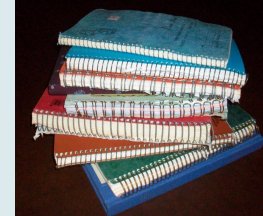
When people ask how I became a writer, I think back to junior high when I began keeping a diary and writing to pen-pals. Without realizing it, I was teaching myself to translate thoughts and emotions into writing.
Forty years and many journals later (some pictured above), I find that writing my fears, feelings, prayers, and dreams, provides not only a record of my experiences, but an invaluable form of self-expression.
For example, the other day I was trying to imagine what my protagonist would feel in the historical novel I'm writing. She has left the comfort of the family farm to go live with a domineering grandmother in the city. I searched through my "character" documents and found a file in which I free-wrote how I was feeling about a family situation. Eureka! I discovered an emotional kernel that I transformed and used in my protagonist's life.
Your students can use journals or daybooks along with a reproducible from my book, Teaching the Story. First, print copies of Mining Your Life. Students can cut it apart and glue a section on the left side of their daybook and use the right side to free-write their response. Next, they springboard from these experiences into creating:
- a story
- a poem
- a persuasive essay using accumulated opinions
- a fictional character with similar thoughts/feelings
- a variety of different pieces which they assemble into a memoir

|
|
Journaling on a Paper Bag |
by Joyce
Journaling comes in many forms, including paper bags!
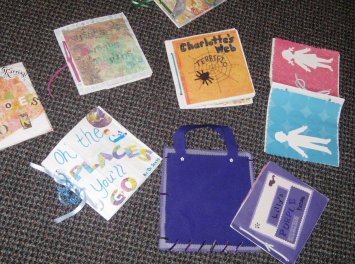
Paper bag journals are fun, creative, and inexpensive.
They can be used to chronicle any personal activities or learning experience:
- What I did on summer vacation
- My Christmas, Kwanza, or Hannukah
- Our field trip
- My favorite books
- Favorite characters
- Nature journal
- Book report
- Historical event
- My pets
- My family
- Favorite games
- A particular sport
- Food and recipes
- School's football season
- American presidential history
- Trip journal
- You name it!
Instructions, images, and video tutorials here.
|
|
Want to explore a
Writer-in Residence Workshop or Author Visit?
We'd love to hear from you!
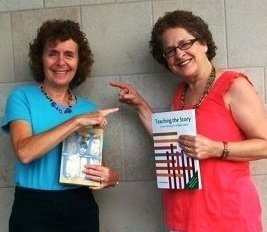
We each offer our own author visits or we'll conduct writer residencies together. Contact us and we will design a program that meets your students' needs.
Carol Baldwin
Blog
Email
Joyce Hostetter
Blog
Website
Email
|
|
Our thanks to Egmont USA, Clara Gillow Clark, Karen Haag, Cole Hartzler, and Carol Larson for their generous donations of books, writing, and proofreading! |
|
Does Talking Story come into your inbox at an inopportune time? Or get buried in your in-box and you end up forgetting about it? Consider creating a "Talking Story" folder where you file old issues. That way they'll be there when you have time to read, and you'll always be able to view past issues. That works for us! |
|
We wish you a joyous holiday season with your family. Look for us again in the beginning of January when we feature multi-cultural books and writing ideas. |
|
|
|
For best results,
click on
"View as Webpage" (on pale yellow bar at the top.) |
|
by Joyce
BLUE and COMFORT are not memoirs but they contain bits and pieces of my life experiences.
(Now available in matching paperbacks.)
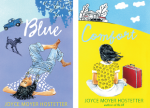
Click on the book covers to preview these historical novels. |
|
We have several fine giveaways below. To enter the contest just Email us before November 7th with a promise to tweet, blog, or facebook your prize! The authors and publishers who donated will appreciate it! |
|
Hill Hawk Hattie by
Clara Gillow Clark is one girl's adventure on the Delaware River. Her journey is both physical and emotional. Her diary, inherited from her mother, is a key to her emotional survival.
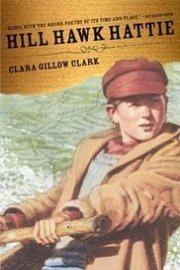
|
|
In our last issue we reviewed the book, Riot, by Walter Dean Myers. Although not a journal or a memoir, this powerful novel about the Irish-African American conflict in New York City in the Civil War is written with the immediacy of both.

|
|
Drawing From Memory by Caldecott winner Allen Say, is described as part memoir, part graphic novel, part narrative history. It gives readers an inside look through art at Say's journey to becoming an extraordinary artist.
Catherine Called Birdy is an engaging diary of a lively 14-year-old girl in 13th century England.
"My Name is America" series. These short novels, written in diary format, target boy readers in upper elementary and middle school.
"Dear America" series.
These novels are written in diary format and geared toward uppper and middle school girls.
For more suggestions, download this list of books: Diary Format for Young Adults. |
|
In this fascinating discussion on
boys and literacy, Ralph Fletcher and Tom Newkirk emphasize the importance of letting boys write what they know! Hmmm sounds rather memoirish, doesn't it? |
|
The house of literacy has a thousand doors and all you have to do is go through one of them. (Tom Newkirk)
Anyone who believes you can't change history has never tried to write his memoirs. (David Ben Gurion)
Memoirs are the backstairs of history. (George Meredith)
Journal writing is a voyage to the interior.
(Christina Baldwin)
|
|
Have You Thought of Writing Your Memoir? |

Everyone has a story, but only you can tell yours! If you have ever toyed with the idea of recording your history for the next generation, you might consider watching the Writer's Digest tutorial on this subject.
|
|
From the last issue of talking story:
Rosemary Moore won Friendship Doll by Kirby Larson.
Linda Anderson won Hands-On Literacy Projects by Diedre Godin.
Joan Carris won a year's subscription to Literacyhead.
Congratulations and thanks for participating! |
|
|
